What’s the best time to travel to Iceland?
The best time to visit Iceland depends on what you want to experience and the activities you want to do during your trip; Do you want to see the northern Lights? Do you want to experience the long summer nights in Iceland and the spectacular midnight sun? Do you want to visit the natural geothermal pools in Iceland? Maybe do some whale watching or take a close look at the puffins?
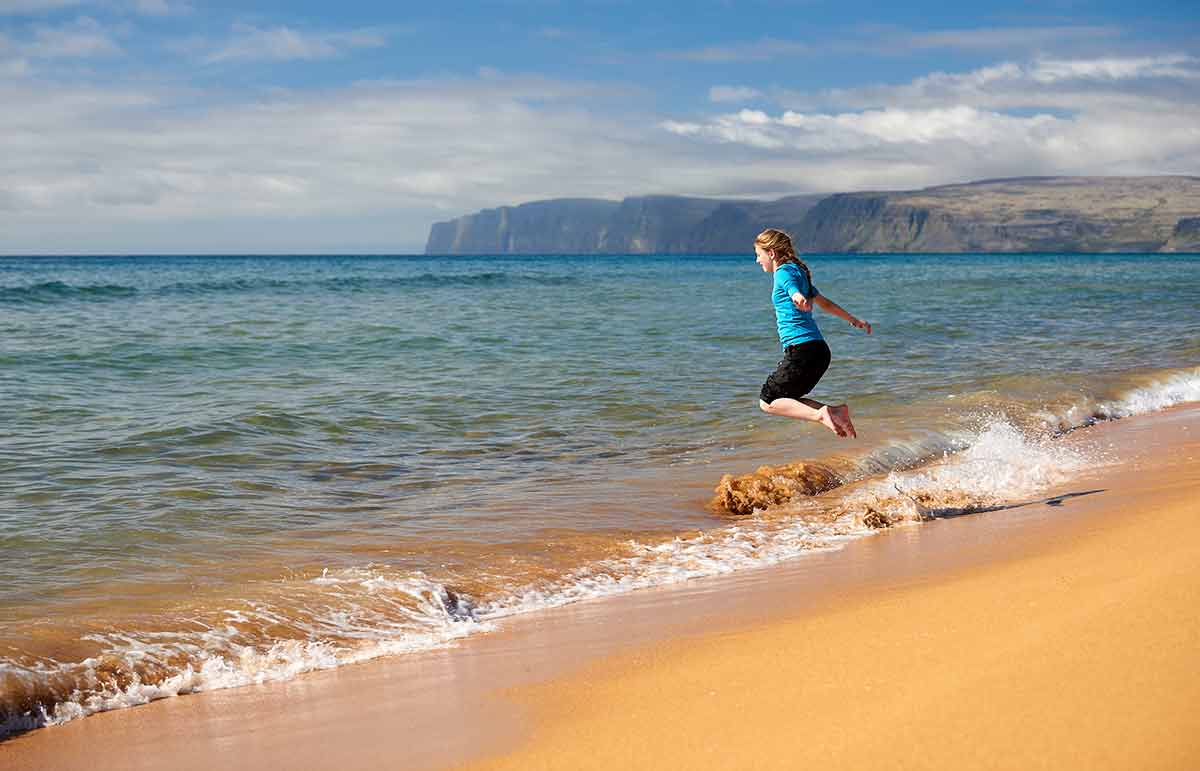
What’s the average temperature in iceland?
Icelandic weather can vary greatly throughout the year, and it’s essential to be prepared for changing conditions regardless of when you visit. Although the temperatures are normally a bit colder than travellers are used to from their home and there is hardly any extreme cold even in winter. For the capital city of Iceland, Reykjavik, the average temperatures of 1-2°C are given in the winter months.
In summer the average temperature is around 15°C. It is astonishing that the summer in the north brings more warm days and less precipitation than in the south, although the average temperatures in the north are somewhat lower.
Iceland’s location on the Gulf Stream means that the mild air of the Atlantic meets the cold air of the Arctic. This is the reason for the frequent and sudden weather changes that are often paired with strong winds. Not for nothing does Iceland have the saying: “If you don’t like the weather, wait five minutes”.
When is Iceland the warmest?
Summer in Iceland (June – August) is the peak tourist season in Iceland. The weather is generally mild with long summer nights. This is the best time to explore Iceland’s countryside, go on hiking and experience Iceland’s unique natural phenomena such as the midnight sun and the famous puffins.
During the summer months June to August the weather is most stable, the temperatures highest and the number of rainy days lowest. Temperatures above 25 degrees are rare, but can occur, especially it the North or Northeast. The heat record for Iceland is over 30 degrees.
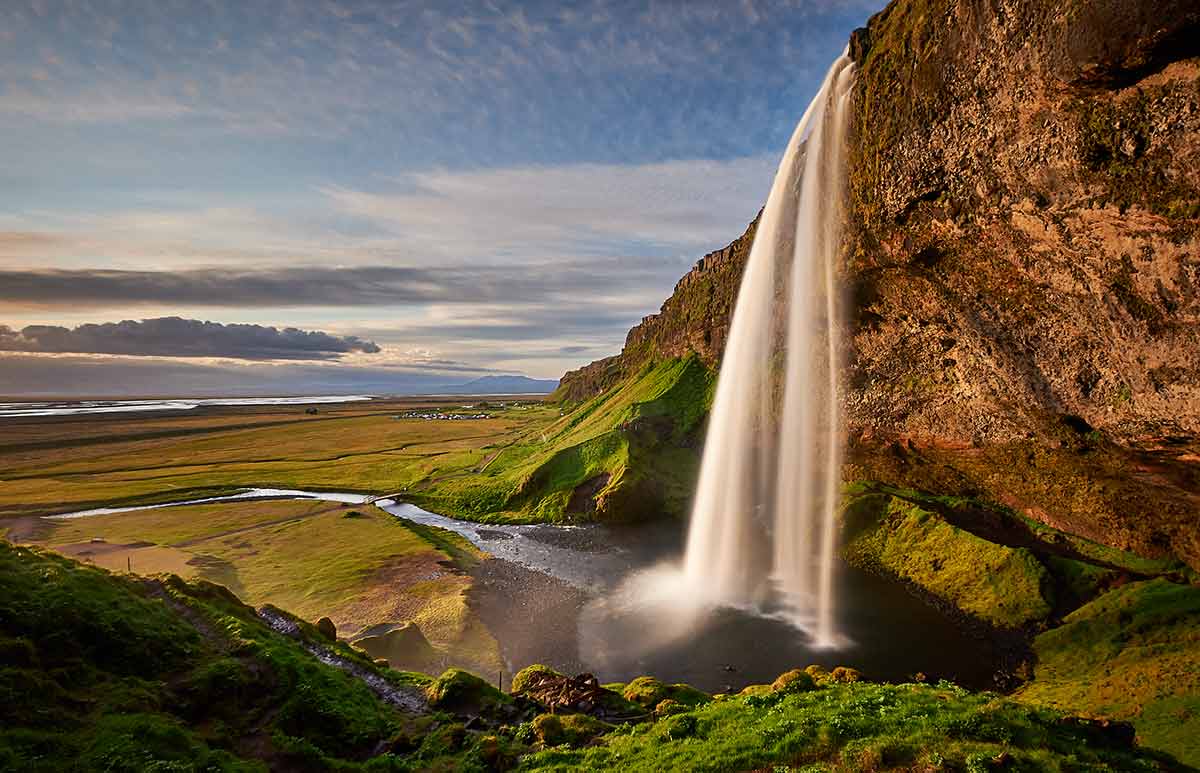
Seljalandsfoss waterfall on a long summer day at a late hourThe biggest drawbacks of visiting Iceland in summer are the many visitors you will encounter, especially in the easily accessible and famous places, and the higher cost of hotels, cottages and rental cars during the high season. If you are staying in one of our holiday homes and do not have to rely on hotel meal times, you can also use the long days to visit Iceland’s attractions in the late evening or early morning. Photographers are not only rewarded with peace and quiet, but also with the best light.
Is autumn a good time to visit Iceland?
Autumn is a wonderful time to visit Iceland with fewer visitors then in the summer, leaving many areas of the country free to explore and enjoy at lower prices.
Autumn begins in Iceland at the end of August and beginning of September. The mild weather, with average temperatures of 10-12°C in September and around 7°C in October, provides great conditions for exploring the countryside.
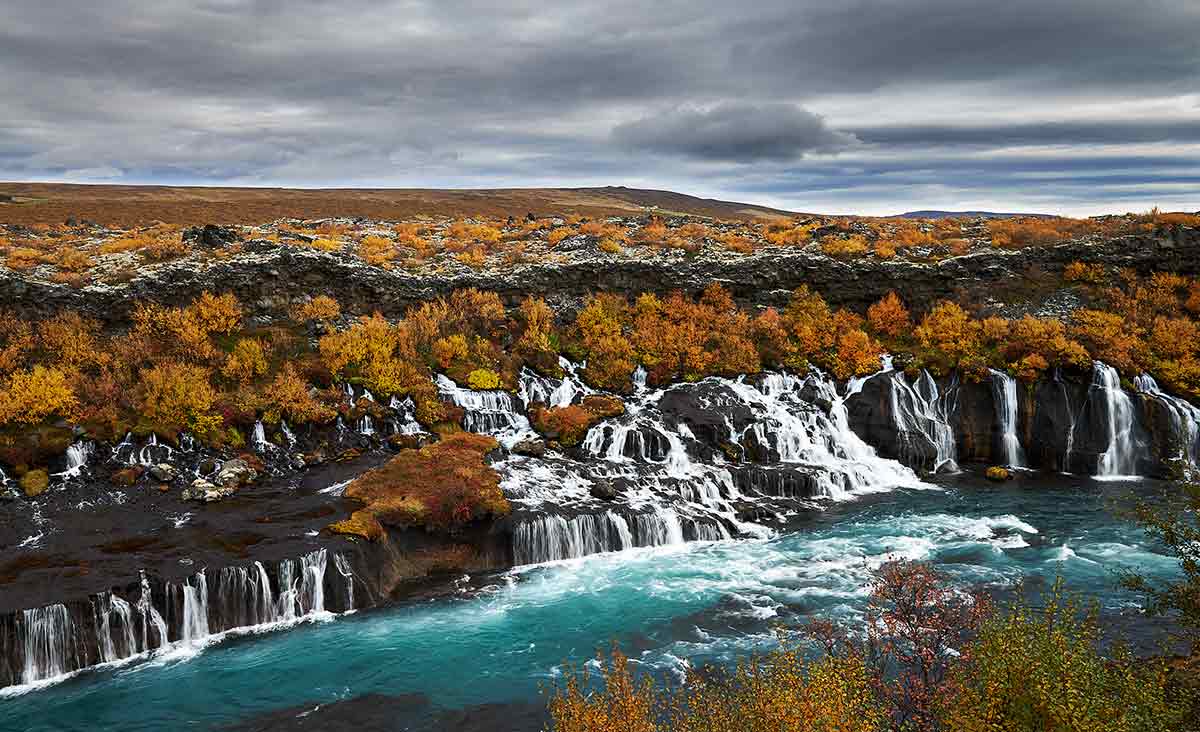
Hraunfossar in autumn
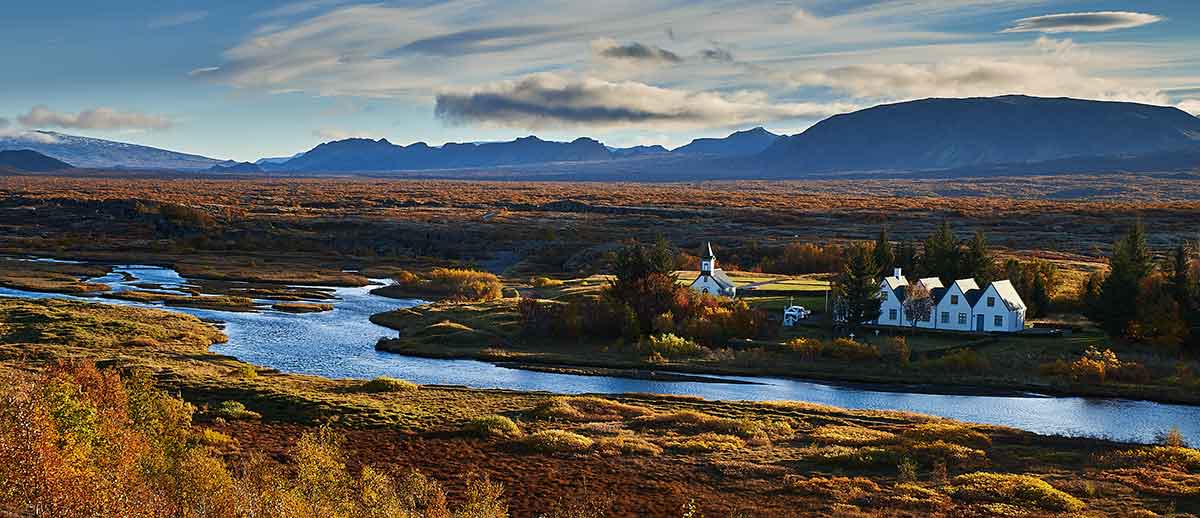
Autumn makes Thingvellir shine in different colours
Autumn is a prime time to witness the Northern Lights, with increased chances of clear nights and milder temperatures for a more comfortable viewing experience. And traveling during the offseason means fewer crowds, offering a more peaceful and immersive experience at popular locations. The chances of northern lights are increasing as the days get shorter.
Winter in Iceland
Visiting Iceland during winter time (December – February) is another popular time, especially for those who want to witness the Northern Lights.
The days are sometimes very short and the temperatures drop again. The weather can be harsh with limited daylight, but the snow-covered landscape and icy glaciers offer a unique and unforgettable experience. The winter is characterized by sub-zero temperatures, snow and stormy days. Waterfalls freeze over and the landscape becomes white. In winter, the highlands can only be reached by helicopter or with specially equipped vehicles. Temperatures can drop to as low as -20 degrees here.
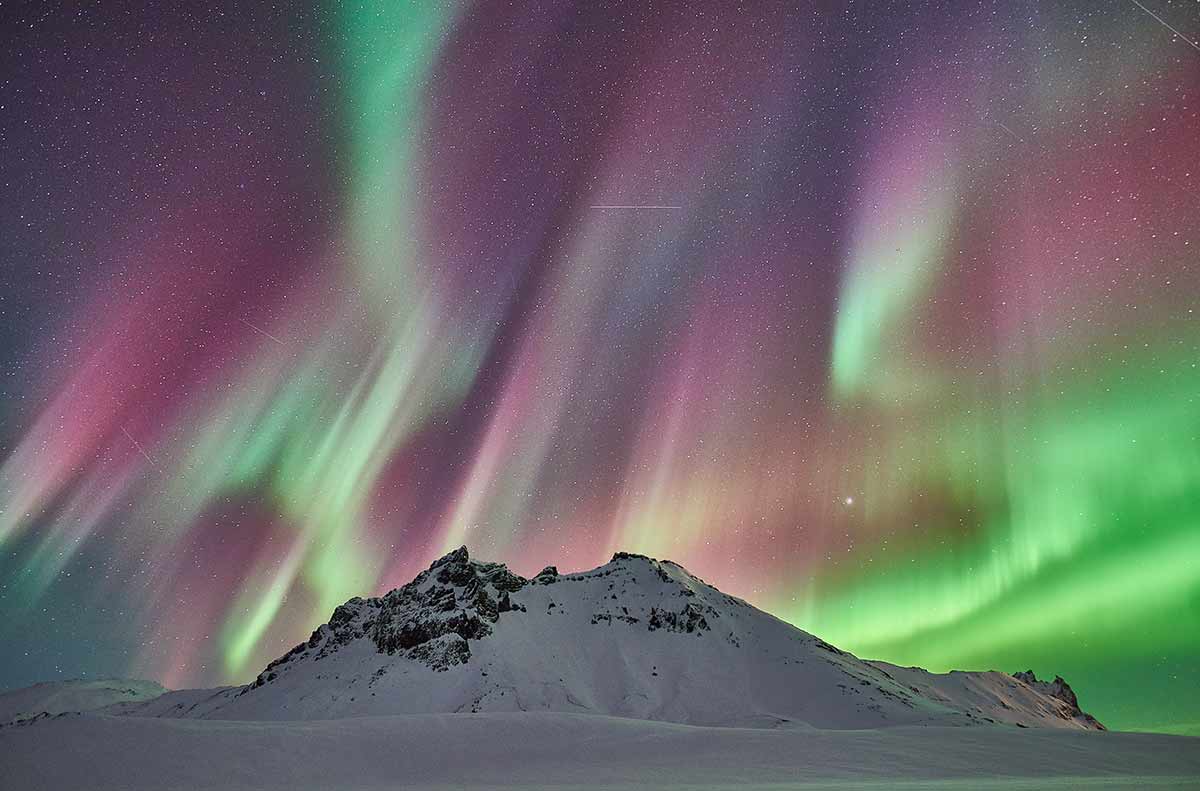
Northern lights near Vík during a winter night
But the winter in Iceland offers a lot: First of all of course the chance to see aurora borealis. A clear sky and aurora borealis in the sky are the prerequisites to experience this fascinating natural spectacle. If you want to see ice caves, you should also plan your trip to Iceland for the winter. Skiers in Iceland have the opportunity to enjoy their adventure with a view of the sea or a fjord. Other winter activities include snowmobile tours, glacier walks, riding tours and whale safaris.
Our guests at Nordic Lodges can relax in our warm and cosy cottages, or watch the northern lights or the winter landscape in the Hot Pot.
Spring time in Iceland
Shoulder seasons of Spring (March – May) and Fall (September – November) offer fewer crowds and lower prices. During the Spring, you can see the snow melting and the flowers blooming, while in the Fall, you can enjoy the colorful autumn leaves and have a chance to witness the Northern Lights.
In the spring months it can snow at any time. But the first warm rays of sunshine are also noticeable. In the coastal regions, temperatures are rising slowly. Nature, frozen under an ice sheet, awakens and the plants begin to bloom. For ornithologists (birdwatchers) spring is the best time to visit Iceland, because then the migratory birds return to Iceland. Those who love the mixture of winter and spring awakening should definitely travel to Iceland in the months from March to May. Puffins are usually observed breeding from the end of May to mid-July.

Church of Budir on the Snaefellsnes Peninsula with snowy landscape
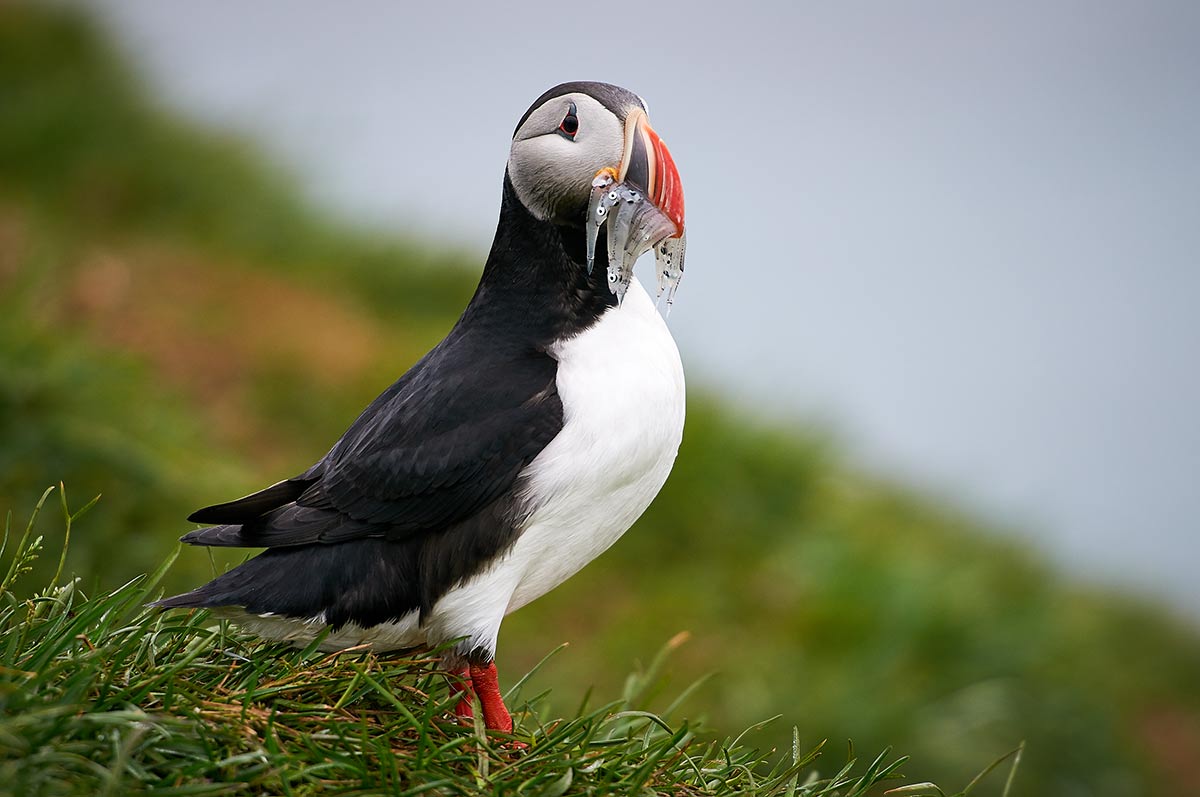
Puffin
Discover Iceland’s Year-Round Charm: Find Your Perfect Travel Season!
There is no best travel time for Iceland, although most visitors still come to Iceland in the months from June to August. Every season has its own charm. The best time to travel to Iceland depends on your preferences and the activities you want to experience. Summer (June – August) offers mild weather, long summer nights, and the opportunity to witness the midnight sun. Autumn (September – October) provides beautiful autumn colors, milder temperatures, and increased chances to see the Northern Lights. Winter (December – February) is popular for witnessing the Northern Lights, snow-covered landscapes, and unique experiences like ice caves. Spring (March – May) and Fall (September – November) offer fewer crowds, lower prices, the blooming of flowers in spring, and colorful autumn leaves in fall, with opportunities to witness the Northern Lights.

